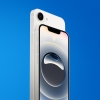Michael Bruck, writing in the South China Post, said that the butterfly in question was Intel not getting selected for the iPhone that Apple was making.
He said that Apple's decision in 2005 to use the ARM architecture instead of Intel's gave Taiwan-based TSMC, the foundry chosen to manufacture the processor chips for the iPhone, the learning curve advantage which over time enabled it to pull ahead of Intel in manufacturing process technology.
Intel's integrated model, its competitive advantage for decades, became its vulnerability. TSMC and ARM created a tectonic shift in the semiconductor industry by enabling many "fabless" chip companies such as Apple, AMD, Nvidia and Qualcomm.
Each successive era of computing was 10x the size of the previous era, so while Intel produced hundreds of millions of microprocessors per year, the mobile phone industry sells billions of units per year.
These fabless companies began to out-design Intel in the mobile phone industry and accelerated TSMC's lead over Intel in high volume manufacturing of the most advanced chips. Samsung, which operates a foundry business, has been another beneficiary of this trend.




